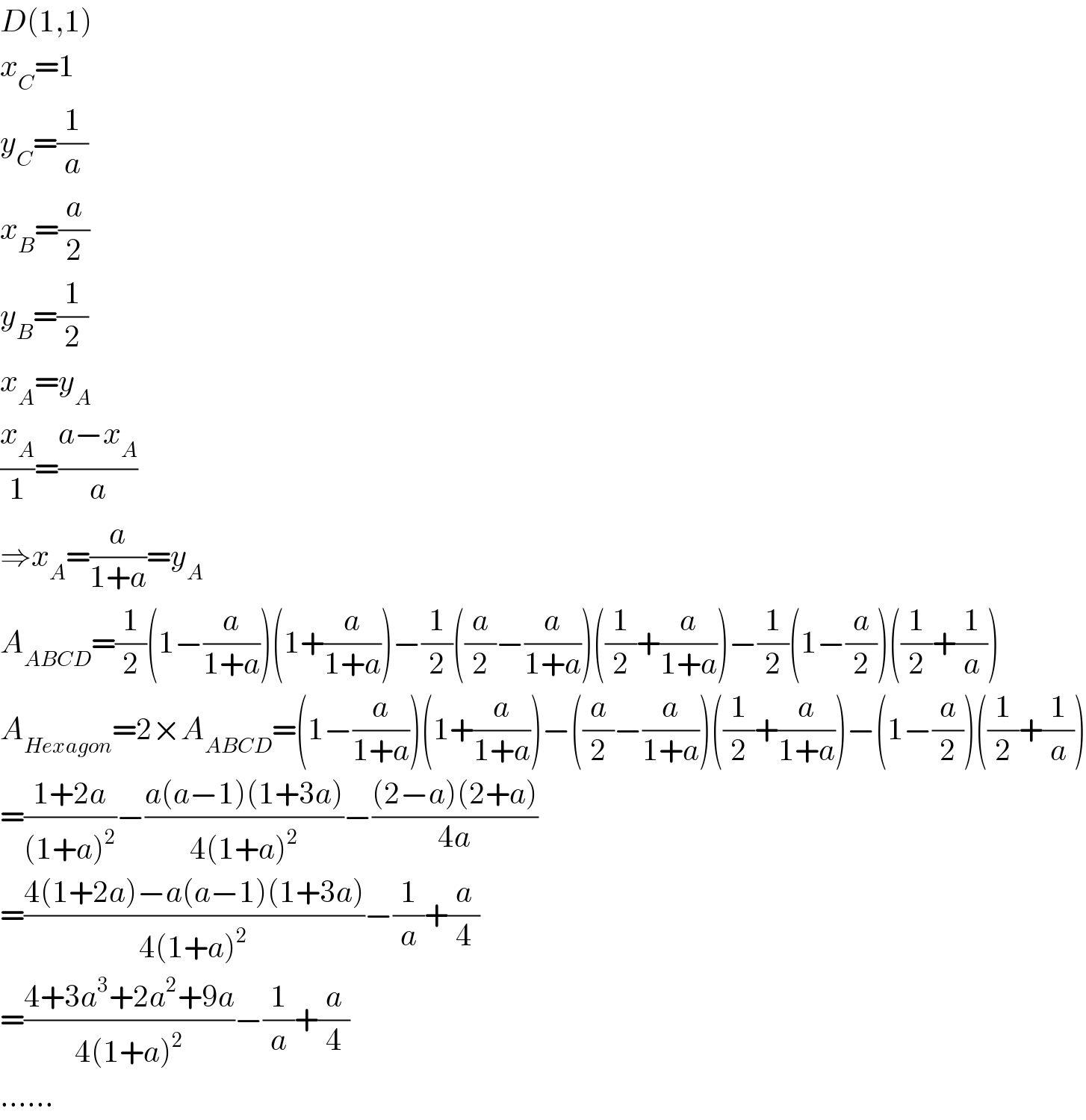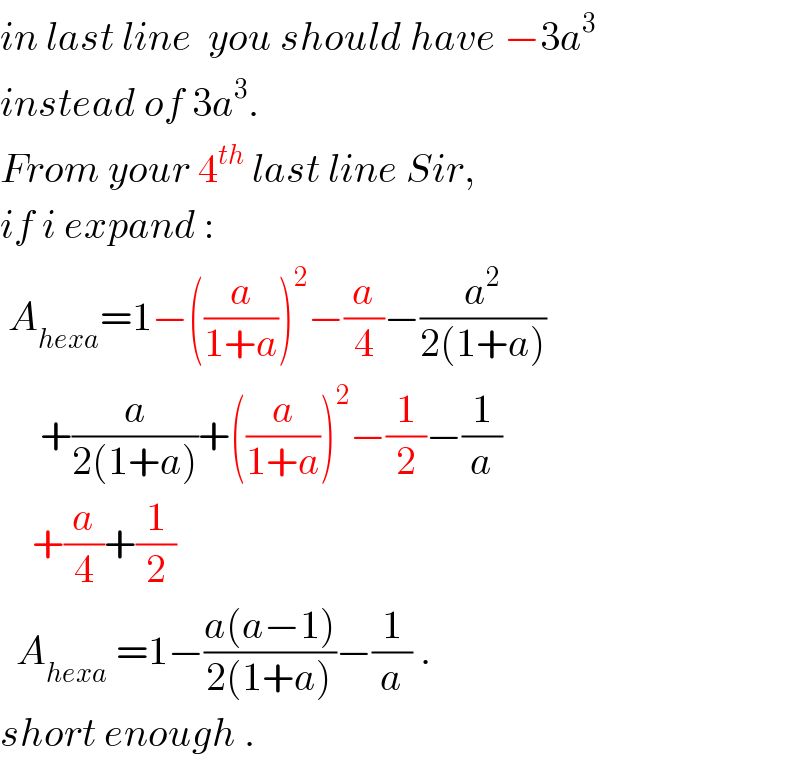
Question and Answers Forum
Question Number 26853 by ajfour last updated on 30/Dec/17

Commented by ajfour last updated on 30/Dec/17

Answered by mrW1 last updated on 30/Dec/17

Commented by mrW1 last updated on 31/Dec/17

Commented by ajfour last updated on 31/Dec/17

Commented by mrW1 last updated on 31/Dec/17

Commented by ajfour last updated on 31/Dec/17

Commented by ajfour last updated on 31/Dec/17
![A_(hexagon) =2[Ar(△OCD)−Ar(△OAB) =2[(1/2)−(1/(2a))−(1/2) determinant (((a/(1+a)),(a/(1+a)),1),((a/2),(1/2),1),(0,0,1))] =1−(1/a)−((a(a−1))/(2(1+a))) .](Q26938.png)
Commented by mrW1 last updated on 31/Dec/17

